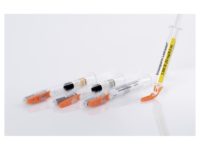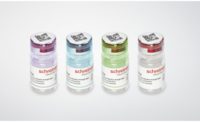Schreiner MediPharm and Edelmann Group Develop Smart Packaging Solution Demo

Schreiner MediPharm, a global provider of specialty pharmaceutical labeling solutions, combines its expertise in innovative specialty labels and integrated solutions with folding box manufacturer Edelmann. The result is a smart medicine packaging solution with diverse digital features, including the BitSecure copy detection technology for fast, reliable product authentication. A closure seal with an integrated NFC chip and a void effect for tamper evidence also have been incorporated.
The new solution exemplifies the prevailing notion that “pharmaceutical packaging of the future” means more than merely marking and protecting medicines. By means of diverse features, a demo version of a smart packaging solution jointly created by the two companies shows pharmaceutical manufacturers the possibilities for authentication and tamper evidence of their products and for supply chain security and compliance with the EU Falsified Medicines Directives in effect since February 2019.
The BitSecure copy detection technology is a printed, digital security feature based on a high-resolution, random pattern whose intricate details are not discernible by the naked eye. In an attempt to copy the small random pattern, whose size is just a few millimeters, the printed image suffers a loss in precision and optical details. The pattern can be authenticated quickly and flexibly on-site using a smartphone or handheld reader, and analyzed via related software. Due to its small size, the cost-efficient authentication technology can be easily integrated into existing packaging or label designs.
The closure seal with a void effect and an integrated NFC chip combines analog and digital technologies, offering double tamper evidence: Before the seal’s initial opening, the user reads the NFC chip using a smartphone and related app to receive confirmation of the product’s authenticity.
If the seal is peeled off, an irreversible void effect will appear. If the user opens the packaging without previously peeling off the seal, the seal will break along the perforation. If the NFC chip is read again, a warning on the smartphone will indicate that the packaging has been previously opened. This makes any tampering attempt clearly visible. Additionally, interactive applications for patient information and assistance may be integrated into the NFC chip.
Looking for a reprint of this article?
From high-res PDFs to custom plaques, order your copy today!






